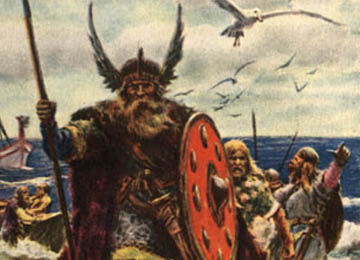Lamas direct the entire ceremony, with their number determined by the
social standing of the deceased. They decide the direction the
entourage will travel with the body, to the specific day and time the
ceremony can happen.
Mongolians believe in the return of the soul. Therefore the lamas
pray and offer food to keep evil spirits away and to protect the
remaining family. They also place blue stones in the dead persons bed
to prevent evil spirits from entering it.
No one but a lama is allowed to touch the corpse, and a white silk
veil is placed over the face. The naked body is flanked by men on the
right side of the yurt while women are placed on the left. Both have
their respective right or left hand placed under their heads, and are
situated in the fetal position.
The family burns incense and leaves food out to feed all visiting
spirits. When time comes to remove the body, it must be passed through a
window or a hole cut in the wall to prevent evil from slipping in while
the door is open.
The body is taken away from the village and laid on the open ground. A
stone outline is placed around it, and then the village dogs that have
been penned up and not fed for days are released to consume the
remains. What is left goes to the local predators.
The stone outline remains as a reminder of the person. If any step of the ceremony is left out, no matter how trivial,
bad karma is believed to ensue.







 Viking’s ashore. Illustration Long Beach City College
Viking’s ashore. Illustration Long Beach City College Pounding the bones. Photo by Rotem Eldar
Pounding the bones. Photo by Rotem Eldar